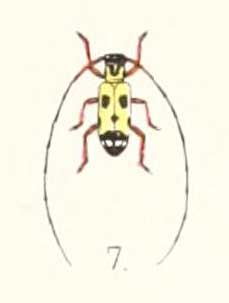
The music of Puerto Rico has evolved as a heterogeneous and dynamic product of diverse cultural resources. The most conspicuous musical sources have been Spain and West Africa, although many aspects of Puerto Rican music reflect origins elsewhere in Europe and the Caribbean and, in the last century, the USA. Puerto Rican music culture today comprises a wide and rich variety of genres, ranging from essentially indigenous genres like bomba to recent hybrids like reggaeton. Broadly conceived, the realm of "Puerto Rican music" should naturally comprise the music culture of the millions of people of Puerto Rican descent who have lived in the USA, and especially in New York City. Their music, from salsa to the boleros of Rafael Hernández, cannot be separated from the music culture of Puerto Rico itself.

La Plena is a genre of music and dance native to Puerto Rico.
Mon Rivera is the common name given to two distinct Puerto Rican musicians, namely Monserrate Rivera Alers and his oldest son, Efraín Rivera Castillo (1924-1978),. This article refers mainly to Efraín, a popular band leader known in salsa, plena and Latin jazz circles.

Gaston Waringhien was a French linguist, lexicographer, and Esperantist. He wrote poems as well as essays and books on linguistics. He was chairman of the Akademio de Esperanto.

Rafael Cepeda Atiles a.k.a. "The Patriarch of the Bomba and Plena" was the patriarch of the Cepeda family, known internationally as the exponents of Afro-Puerto Rican folk music.

Plena Ilustrita Vortaro de Esperanto is a monolingual dictionary of the language Esperanto. It was first compiled in 1970 by a large team of Esperanto linguists and specialists under the guidance of Gaston Waringhien and is published by the Sennacieca Asocio Tutmonda (SAT). Since 2012, it may be consulted online after free registration.
Manuel A. Jiménez or "El Canario", Born in Orocovis, Puerto Rico on January 1, 1895, was a Puerto Rican musician most famous for his work in the plena style. During the 1930s, he introduced new elements like piano, horns, and bass into plena, spreading its popularity. Manuel A Jiménez died on November 21, 1975.
Plenas is a municipality located in the Campo de Belchite comarca, province of Zaragoza, Aragon, Spain. According to the 2004 census (INE), the municipality has a population of 131 inhabitants.

Bertilo Wennergren is a Swedish Esperantist currently living in the village of Schossin in northern Germany.

The Vortaro de Esperanto, published by Kazimierz Bein in 1911, was the first monolingual dictionary ever published in Esperanto.

"Pégate" is the second single from Ricky Martin's first live album, MTV Unplugged (2006). It was released on December 19, 2006. The song was written by Martin, Roy Tavaré and Tommy Torres, and produced by Torres.
Plena Libre is a plena and bomba group. Their music follows traditional forms while also drawing on other styles of music. In a biographical summary of the group, Steve Huey of Allmusic observed that the group's blend of "contemporary dance arrangements... (and) the long-ignored Puerto Rican folklore-derived plena style... return(ed) the style to prominence." A popular live act over the course of a 20-year, 14-album career, the Puerto Rican ensemble are known for strong musicianship; for example, Chris Nickson of Allmusic, in noting the blending of jazz elements with plena on the Mas Libre CD, described the group's delivery of said as "highly accomplished".
Tragocephalini is a tribe of longhorn beetles of the Lamiinae subfamily. It was described by Thomson in 1857.

Pseudochariesthes is a genus of longhorn beetles of the subfamily Lamiinae, containing the following species:
Isochariesthes lesnei is a species of beetle in the family Cerambycidae. It was described by Stephan von Breuning in 1934, originally under the genus Pseudochariesthes.

Isochariesthes breuningstefi is a species of beetle in the family Cerambycidae. It was described by Pierre Téocchi in 1985, originally under the genus Pseudochariesthes.
Isochariesthes multiguttata is a species of beetle in the family Cerambycidae. It was described by Hunt and Stephan von Breuning in 1955, originally under the genus Pseudochariesthes. It is known from Swaziland and South Africa. It measures between 7 to 7.5 mm.
Pseudochariesthes nigroguttata is a species of beetle in the family Cerambycidae. It was described by Per Olof Christopher Aurivillius in 1908. It contains the varietas Pseudochariesthes nigroguttata var. blairi.

Pseudochariesthes nobilis is a species of beetle in the family Cerambycidae. It was described by Jordan in 1894, originally under the genus Chariesthes.
Pseudochariesthes superba is a species of beetle in the family Cerambycidae. It was described by Stephan von Breuning in 1962.










